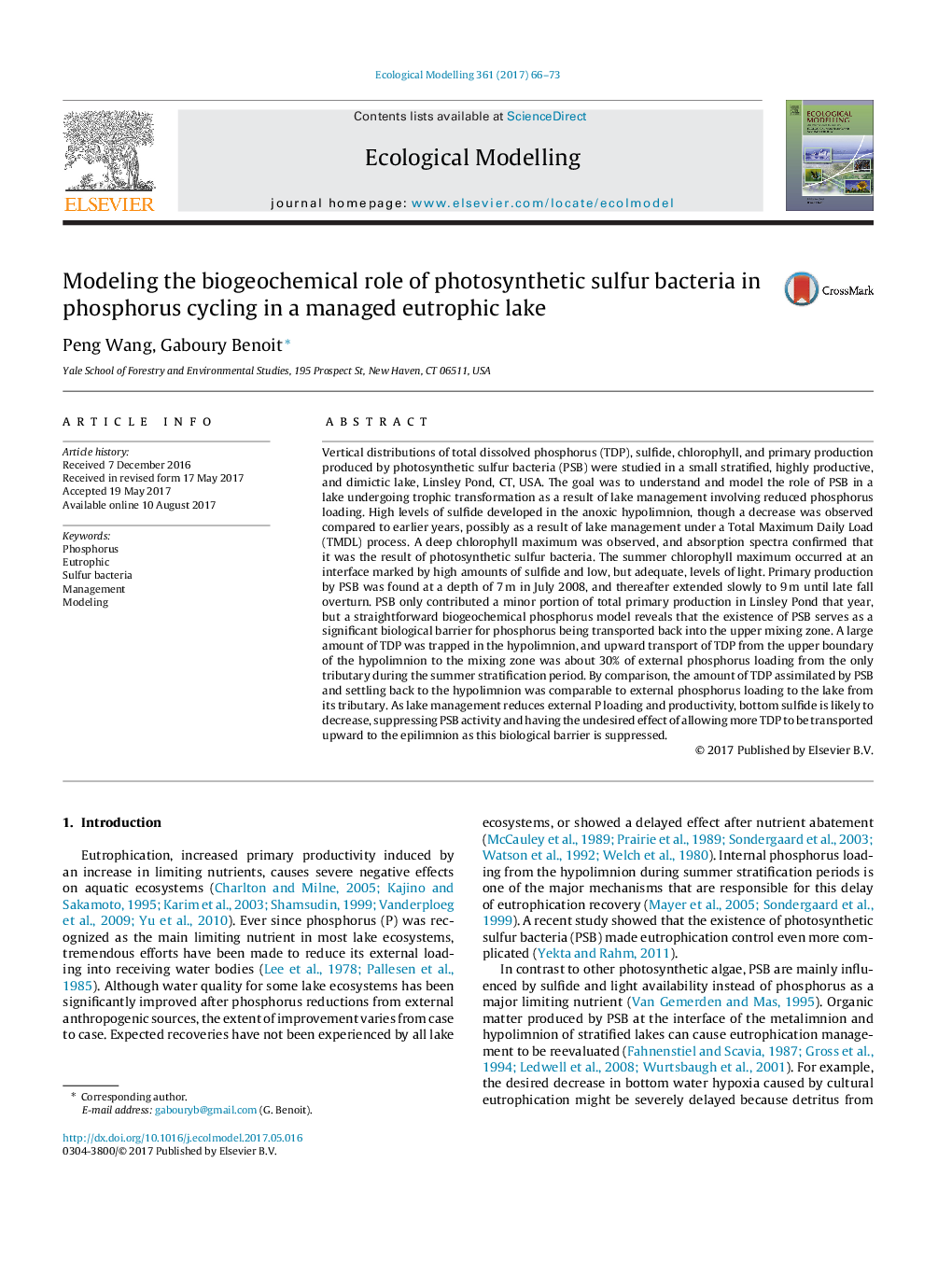| کد مقاله | کد نشریه | سال انتشار | مقاله انگلیسی | نسخه تمام متن |
|---|---|---|---|---|
| 5741995 | 1617386 | 2017 | 8 صفحه PDF | دانلود رایگان |
- Modeling shows photosynthetic sulfur bacteria (PSB) can block upward transport of P.
- PSB had a minor role in total lake photosynthesis but a major role in P cycling.
- PSB populations may increase or decrease when P loading to lakes is lowered.
- PSB can cause a negative feedback loop that delays benefits of reduced P loading.
Vertical distributions of total dissolved phosphorus (TDP), sulfide, chlorophyll, and primary production produced by photosynthetic sulfur bacteria (PSB) were studied in a small stratified, highly productive, and dimictic lake, Linsley Pond, CT, USA. The goal was to understand and model the role of PSB in a lake undergoing trophic transformation as a result of lake management involving reduced phosphorus loading. High levels of sulfide developed in the anoxic hypolimnion, though a decrease was observed compared to earlier years, possibly as a result of lake management under a Total Maximum Daily Load (TMDL) process. A deep chlorophyll maximum was observed, and absorption spectra confirmed that it was the result of photosynthetic sulfur bacteria. The summer chlorophyll maximum occurred at an interface marked by high amounts of sulfide and low, but adequate, levels of light. Primary production by PSB was found at a depth of 7Â m in July 2008, and thereafter extended slowly to 9Â m until late fall overturn. PSB only contributed a minor portion of total primary production in Linsley Pond that year, but a straightforward biogeochemical phosphorus model reveals that the existence of PSB serves as a significant biological barrier for phosphorus being transported back into the upper mixing zone. A large amount of TDP was trapped in the hypolimnion, and upward transport of TDP from the upper boundary of the hypolimnion to the mixing zone was about 30% of external phosphorus loading from the only tributary during the summer stratification period. By comparison, the amount of TDP assimilated by PSB and settling back to the hypolimnion was comparable to external phosphorus loading to the lake from its tributary. As lake management reduces external P loading and productivity, bottom sulfide is likely to decrease, suppressing PSB activity and having the undesired effect of allowing more TDP to be transported upward to the epilimnion as this biological barrier is suppressed.
Journal: Ecological Modelling - Volume 361, 10 October 2017, Pages 66-73
